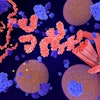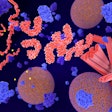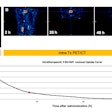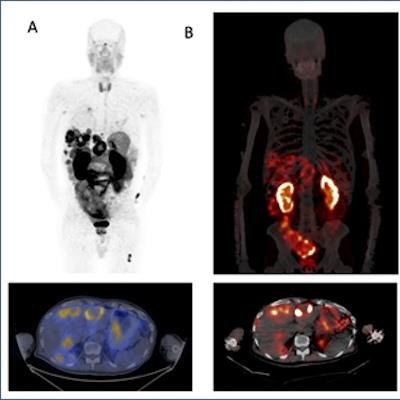
CHICAGO - A new theranostic pair for imaging and treatment of pancreatic cancer has won the Image of the Year award at the 2023 Society of Nuclear Medicine and Molecular Imaging (SNMMI) annual meeting.
The winning image comes from the first-in-human evaluation of the novel theranostic pair gallium-68 (Ga-68) DOTA-5G/lutetium-177 (Lu-177) DOTA-ABM-5G. The study confirmed its ability to successfully detect metastatic pancreatic cancer and visualize targeted treatment of the disease in 17 patients, according to research presented during the meeting on June 24 by Julie Sutcliffe, PhD, a professor of internal medicine and biomedical engineering at the University of California, Davis.
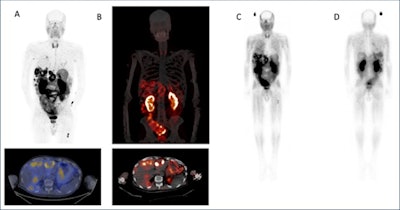 (A) Ga-68 DOTA-5G PET/CT images (1 hour post injection). (B) Lu-177 DOTA-ABM-5G SPECT/CT images (1 day post injection). (C) Lu-177 DOTA-ABM-5G whole body planar image (anterior, 1 day post injection). (D) Lu-177 DOTA-ABM-5G whole body planar image (posterior, 1 day post injection). Image courtesy of Julie Sutcliffe, PhD.
(A) Ga-68 DOTA-5G PET/CT images (1 hour post injection). (B) Lu-177 DOTA-ABM-5G SPECT/CT images (1 day post injection). (C) Lu-177 DOTA-ABM-5G whole body planar image (anterior, 1 day post injection). (D) Lu-177 DOTA-ABM-5G whole body planar image (posterior, 1 day post injection). Image courtesy of Julie Sutcliffe, PhD.The American Cancer Society estimates that more than 64,000 people will be diagnosed with pancreatic cancer in 2023, and more than 50,000 of them will die from the disease -- a five-year survival rate of only 12%.
"Poor patient outcomes are due partly to the late stage at which the majority of patients are diagnosed and partly to the limited and relatively ineffective treatment options," Sutcliffe said, in a news release from the SNMMI.
Each year, SNMMI chooses an image that best exemplifies the most promising advances in the field of nuclear medicine and molecular imaging. The state-of-the-art technologies captured in these images demonstrate the capacity to improve patient care by detecting disease, aiding diagnosis, improving clinical confidence and providing a means of selecting appropriate treatments, SNMMI said. This year, the SNMMI Image of the Year was chosen from more than 1,500 abstracts submitted for the meeting.
The finding from Sutcliffe's team will add to the rapidly advancing landscape of theranostics, noted SNMMI Scientific Program Chair Heather Jacene, MD.
"This new theranostic approach to detecting and treating pancreatic cancer, as shown in the Image of the Year, is a prime example of how personalized medicine can noninvasively detect dis-ease, appropriately select and effectively treat patients, and have a significant, positive impact on the lives of many," she said.





